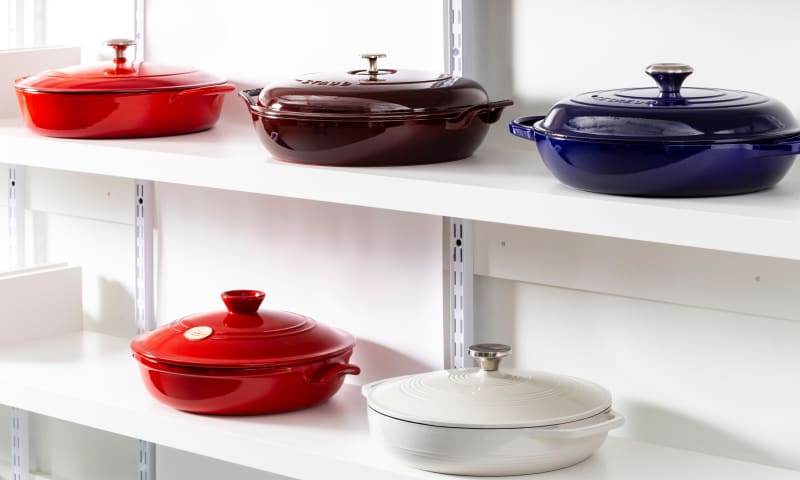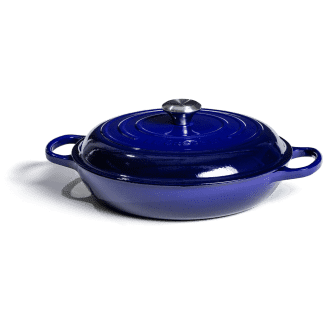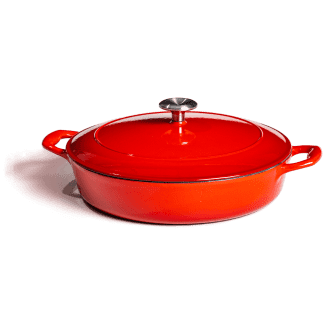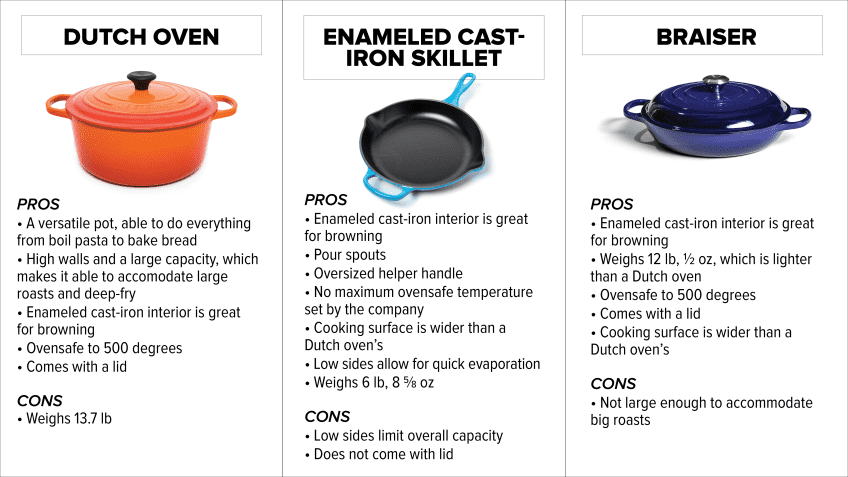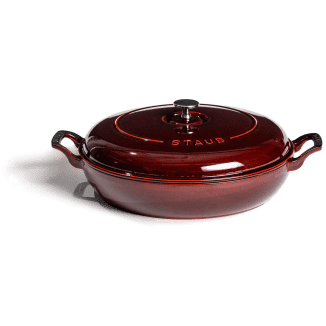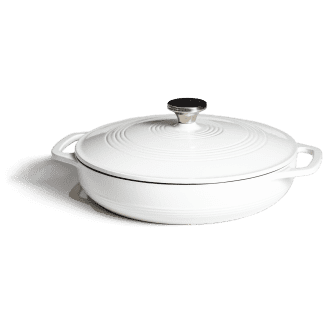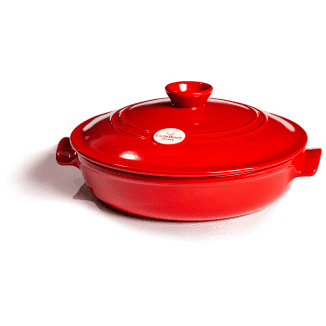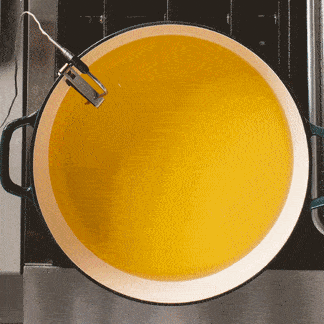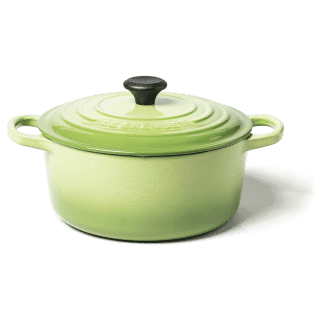At a recent tastings and testings team meeting, we played a fun game: Each of us named our top five must-have pieces of cookware. My number one pick was a braiser. My enameled cast-iron braiser pretty much lives on my kitchen stove, ready to tackle anything from chili to sautéed greens to shakshuka to roast chicken.
Traditionally defined, braising is a wet-heat cooking method that’s used to turn tough cuts of meat tender. The meat is typically browned on the stovetop before liquid is added, and then it’s cooked either on the stovetop or in the oven for a relatively long period of time to break down the meat fibers. Most braising recipes call for a Dutch oven that’s large enough to accommodate the food, but a braiser—a round pan that is shallower than a Dutch oven, with sloped sides to contain liquid and a wide cooking surface for browning—can also be used for braising all types of foods. However, the shallowness of this pan does limit what you can braise—large roasts, such as the bottom rounds or chuck-eye roasts called for in pot roast recipes, won’t fit.
Like a Dutch oven, a braiser has two handles for easy transport and a lid to retain moisture and is usually made from enameled cast iron, which is great for heat retention. Its sloped sides allow for the easy maneuvering of food when browning. It can also function as a roasting pan, since it is large enough to hold a 5-pound chicken. A bonus: Most braisers are attractive enough to go from the stovetop to the table as serving dishes.
To find out which braiser is best, we selected five models, priced from about $59 to about $330. While one of the models was ceramic, the rest were made of enameled cast iron (we didn’t find any models that were traditional cast iron). We focused on braisers that were about 3.5 quarts, as this size accommodates enough food to serve four. While there were some stainless-steel braisers on the market, we focused on ceramic and cast-iron braisers since these are the same materials we reviewed when we tested large Dutch ovens. We used each to make One-Pan Lemon-Braised Chicken Thighs with Chickpeas and Fennel; meatballs in tomato sauce; Mediterranean Braised Green Beans with Mint and Feta Cheese; Weeknight Roast Chicken; and Pork, Fennel, and Lemon Ragu with Pappardelle.
